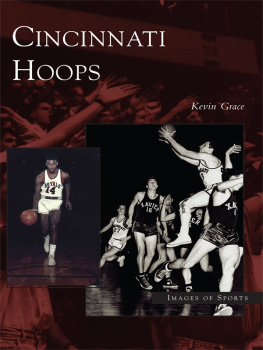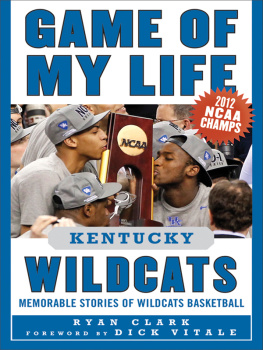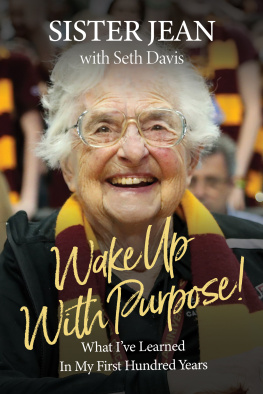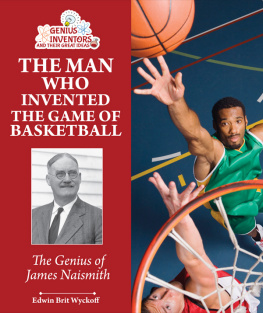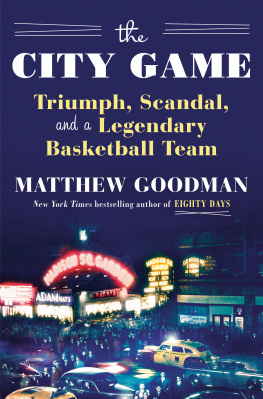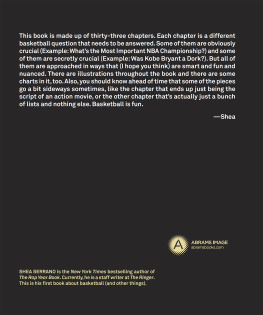RAMBLERS
RAMBLERS
LOYOLA CHICAGO 1963THE TEAM THAT CHANGED
THE COLOR OF COLLEGE BASKETBALL

MICHAEL LENEHAN

MIDWAY
AN AGATE IMPRINT
CHICAGO
Copyright 2013 by Michael Lenehan.
All rights reserved. No part of this book may be reproduced or transmitted in any form or by any means, electronic or mechanical, including photocopying, recording, or by any information storage and retrieval system, without express written permission from the publisher.
First ebook edition 2013
ISBN-13: 978-1-57284-721-7
Library of Congress Cataloging-in-Publication Data
Lenehan, Michael.
Ramblers : Loyola Chicago 1963 --the team that changed the color of college basketball / Michael Lenehan.
p. cm.
Includes bibliographical references and index.
Summary: The story of the 1963 NCAA national champion Loyola University Chicago Ramblers basketball team--Provided by publisher.
1. Loyola University of Chicago--Basketball--History. 2. Basketball--Illinois--Chicago--History. I. Title.
GV885.43.L67L46 2013
796.323630977311--dc23
2012042513
10 9 8 7 6 5 4 3 2 1
Midway Books is an imprint of Agate Publishing. Agate books are available in bulk at discount prices. For more information, go to agatepublishing.com.
When Negroes and whites meet on the athletic fields on a basis of complete equality, it is only natural that this sense of equality carries into the daily living of these people.
Georgia state senator Leon Butts, 1957
To my father and mother, Dan and Eve
To my son and daughter, Jack and Rose
To my wife and partner, Mary Williams
TABLE OF CONTENTS


Im looking at the cover of The Young Sportsmans Guide to Basketball by George A. Cella, published by Thomas Nelson & Sons in 1962. The phototwo basketball teams poised for a jump ballreminds me of an old family portrait: I see a resemblance to a game I know, but some of the details are wrong. The players pants are impossibly short and tight, almost constrictive. Their shoes are Converse Chuck Taylors, which we know today not as basketball shoes but as fashion statements.
These are the things you notice on close inspection. But what you see first, what tells you in an instant that this picture is not from our world, is that all the players are white.
Was there really a time when such a picture was considered realistic, or even plausible?
Was there a time when it was against the rules to dunk? When a coach would bench a player for taking a jump shot? When a major college game could be decided by a score of 2316?
Was there a time when it was considered daring or provocative to have three black players on the floor at the same time? Or when blacks were threatened, spit on, and showered with garbage as they walked onto the court?
Was there a time when civil rights protesters could be attacked by a club-wielding mob while police officers stood by? When the president of the United States had to mobilize 30,000 federal troops to put down an armed insurrection prompted by the enrollment of a single black man at a state university?
There was. I saw some of it on black-and-white TV, and in magazines that no longer exist. But my memories are vague and scant. I was just becoming a teenager. The generation that remembers it better, more directly, has started to pass. And my kids generation knows it only from history class, if at all. Im afraid they find it impossible to believe.
So heres a story about the integration and evolution of college basketball, set against the backdrop of the civil rights movement, one of the most convulsive periods of our nations history. I tell it through the exploits, and sometimes the voices, of three teams that played in the NCAA tournament of 1963.
First and foremost are the Loyola Ramblers of Chicago, who then represented the future of basketball: they were one of the first major college teams with four black starters, and they played in a fast, athletic style that presaged the high-flying game we know today.
Their opponents in the final were the Cincinnati Bearcats, the Goliaths of the game, playing for the fifth straight year in what today we call the final four. Though they had three black starters (and had four the previous year), they played a slow, deliberate game that was on its way out of style.
The third team, the Bulldogs of Mississippi State University, also played in the older style, but they represented the past in a more fundamental way. Not only were they (and the school they represented) all white, they had never even played against a black man, due to an informal state policy of athletic segregation. They had to sneak out of Mississippi in order to compete in the tournament.
The story of basketballs integration and evolution could be, and has been, told in other ways, through other teams. I dont really believe that the Loyola Ramblers singlehandedly changed the color of college basketball, any more than I think the Texas WesternKentucky game in 1966 changed America forever (Don Haskins, Glory Road), or that the Magic JohnsonLarry Bird championship of 1979 transformed basketball (Seth Davis, When March Went Mad), or that North Carolinas 1957 victory over Wilt Chamberlain and Kansas revolutionized college basketball (Adam Lucas, The Best Game Ever). A book like this is obliged to make such a claim on its cover, but we all know better: basketball, never mind America, is not transformed by a single game or team or season.
Still, each of these claims is built on a bit of truth; each represents a moment or a milestone in a long, involved history made up of many incidents and influenced by many heroes and villains. Fifty years ago basketball was played mostly on the floor, black players opportunities were severely limited, and our country was reeling with racial conflict. Today basketball is played largely in the air, black players dominate, and our country is...well, still conflicted, but at least a little steadier on its feet. My aim here is to persuade you that a pivotal moment in that transition was the improbable championship of the Loyola Ramblers, a black-and-white team that opened a lot of eyes and stirred a lot of hearts. I hope you buy the argument, but more than that I hope you enjoy the story.

Jerry Harkness thought it was ordained somehow. It had to be. Too much luck and coincidence were involved, too many dramatic twists. Like it all pointed to this moment. A poor kid raised in a fatherless home in Harlem starts playing high school basketball in his senior year. A struggling coach who has seen him play just onceon a bad dayoffers him a scholarship to a college he knows nothing about in a place hes never been, a Jesuit commuter school in Chicago. Four years later hes an All American on national TV, the captain and leading scorer of the third-ranked college basketball team in the countrythe Loyola Ramblers, underdogs but contenders in the 1963 NCAA championship.


